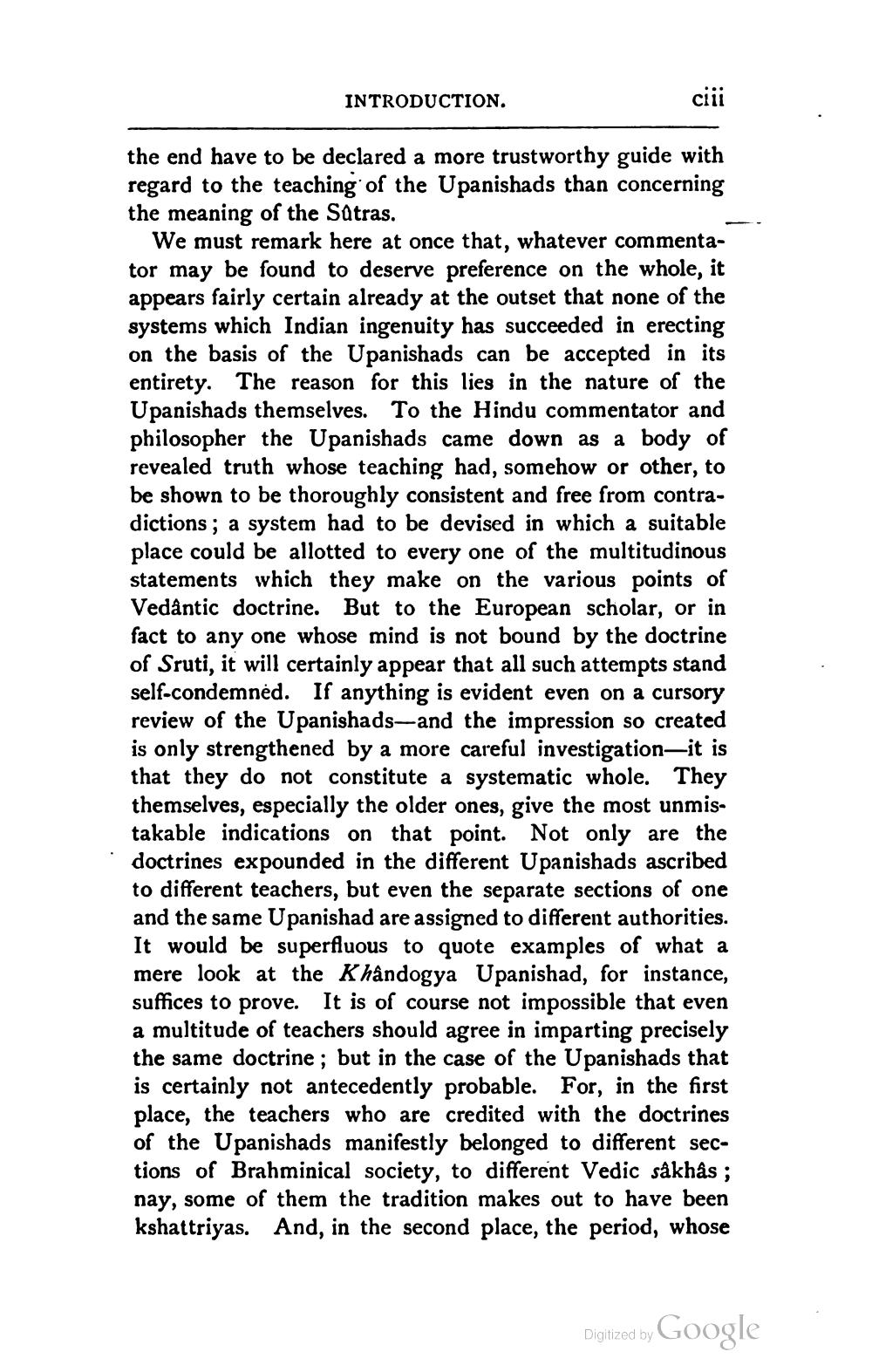________________
INTRODUCTION.
ciii
the end have to be declared a more trustworthy guide with regard to the teaching of the Upanishads than concerning the meaning of the Sutras.
We must remark here at once that, whatever commentator may be found to deserve preference on the whole, it appears fairly certain already at the outset that none of the systems which Indian ingenuity has succeeded in erecting on the basis of the Upanishads can be accepted in its entirety. The reason for this lies in the nature of the Upanishads themselves. To the Hindu commentator and philosopher the Upanishads came down as a body of revealed truth whose teaching had, somehow or other, to be shown to be thoroughly consistent and free from contradictions; a system had to be devised in which a suitable place could be allotted to every one of the multitudinous statements which they make on the various points of Vedantic doctrine. But to the European scholar, or in fact to any one whose mind is not bound by the doctrine of Sruti, it will certainly appear that all such attempts stand self-condemned. If anything is evident even on a cursory review of the Upanishads-and the impression so created is only strengthened by a more careful investigation—it is that they do not constitute a systematic whole. They themselves, especially the older ones, give the most unmistakable indications on that point. Not only are the doctrines expounded in the different Upanishads ascribed to different teachers, but even the separate sections of one and the same Upanishad are assigned to different authorities. It would be superfluous to quote examples of what a mere look at the Khândogya Upanishad, for instance, suffices to prove. It is of course not impossible that even a multitude of teachers should agree in imparting precisely the same doctrine; but in the case of the Upanishads that is certainly not antecedently probable. For, in the first place, the teachers who are credited with the doctrines of the Upanishads manifestly belonged to different sections of Brahminical society, to different Vedic sâkhâs; nay, some of them the tradition makes out to have been kshattriyas. And, in the second place, the period, whose
Digitized by Google




